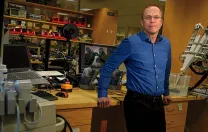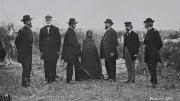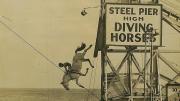If there is a holy grail in robotic surgery, it would be operating on a beating heart without opening the chest. Open-heart surgery is a crude business that can involve temporarily depriving the heart of oxygen, clamping major vessels, and connecting a heart-lung machine. Patients often suffer post-operative depression that may be related to tiny strokes that occur as a result of the surgery, and some suffer permanent cognitive declines. Might it be possible to operate on a heart while it is in motion, in order to avoid such problems? Lawrence professor of engineering Robert Howe and five doctoral students tackled a series of challenges to develop a robot that makes beating-heart surgery possible.
If there is a holy grail in robotic surgery, it would be operating on a beating heart without opening the chest.
“Robotics is one of the most interdisciplinary fields there is,” says Howe, co-director of the M.S./M.B.A. engineering sciences degree program. “My students come from computer science, and electrical, mechanical, and biomedical engineering backgrounds. I tell them, ‘When you come in, you know one of those. When you leave, you’ll know all of them.’” These disciplines need to be combined, he emphasizes, to make robotic systems that work in the real world.
To enable the surgery, Howe and his students used 3-D ultrasound that could provide precision imaging during an operation. “We figured out how to pull three-dimensional images out of existing ultrasound machines in real time, and into our image-processing computers,” he explains. “Then we wrote high-speed image processing algorithms that could compensate for the 100-millisecond lag in the system, and could figure out where the tissue target is located, and where the instruments are located. And then we would drive the instruments robotically so that they could keep pace with the motion of the tissue, which is too fast for human surgeons to do by hand.” With the robot performing motion cancellation, the surgeon could interact with the tissue as if it were motionless, or nearly still. “We made that work, and showed that you can do some pretty elaborate work inside the heart,” says Howe—“valve repair, for instance.”
Howe and his students worked with Harvard’s Office of Technology Development to license the robot for commercial development. “And the response we got from surgical robot companies, catheter companies, imaging companies,” he reports, “was, ‘Well, that’s a great way to do it. That’s very exciting. And we won’t touch that because it is too hard.’” One company representative, exaggerating a little, characterized the process of making the robot safe for commercial deployment as “a billion-dollar project.”
Although the advances that Howe and his interdisciplinary team achieved may not have commercial application now, there will be spin-offs of the technology. The real-time ultrasound imaging capabilities they developed, for example, were recently tested as a means for on-the-fly personalization of a soft, wearable robot developed by Howe’s colleague, Conor Walsh (see main text above).









